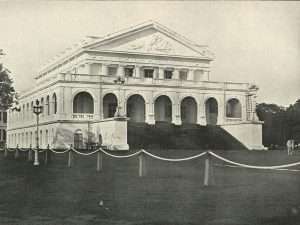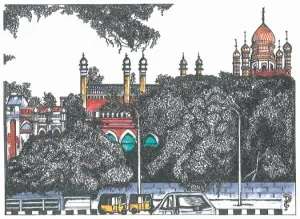There is some good news on the heritage front. The State Government has announced a budget of Rs 100 crores or thereabouts for the restoration of 17 heritage structures across the State. The buildings that will be attended to within the city are Rajaji Hall, the Pay and Accounts Office East and Agricultural Records Building (we presume this means the Humayun Mahal and the tower that Chisholm built to link the two wings of the Chepauk Palace), and parts of the King Institute. Out of the Rs. 100 crores, around Rs. 44 crores will be spent on these city-based structures. In addition, it is learnt that the Heritage Wing of the Public Works Department is also attending to the old Government Press (earlier the Mint) on Mint Street as well as focusing on completing the restoration of Humayun Mahal. Once these are all done, the State Government will have a track record to be proud of and hopefully will prove an inspiration to owners of private heritage buildings.

What is not spelt out with any clarity however is the process that will be followed. There is no doubt that it will be the Heritage Wing of the Public Works Department that will take up the activity. But is it even equipped to handle work of such magnitude? A news report a year or so ago had it that with just 19 engineers and 25 assistants, the Heritage Wing was struggling to handle the restoration of just Humayun Mahal, work on which has been in progress for over nine years. Of course, heritage conservation cannot be date bound and is prone to many twists and turns but even given all of that, the question arises as to how a department that is finding tasks on hand difficult to complete can take on so many others.
The PWD had earlier said that the shortage of skilled labour was a problem and has chosen to blame the COVID pandemic for it. But it is a well-known fact that the paucity existed even before. It is therefore surprising that PWD has now said that the shortage is a matter of the past and it has sufficient artisans to take on restoration. If this is true, we are happy but in the absence of any real change on the ground, we are doubtful.
While we appreciate that heritage conservation is a time-consuming process, it is necessary to realise that awaiting manpower is not part of conservation activity and is actually a waste of time. The continued deterioration of heritage structures cannot be halted during the hiatus and the delay compounds future restoration even more apart from causing budgets to creep upwards. It is therefore necessary for PWD to spell out just how it is going to manage such a spate of restoration. If the answer is by contracting the work out, then it is also necessary for the larger public to be informed of the credentials of such parties. Irreversible damage can be caused if restoration is handled by inexperienced agencies.
The actual problem lies elsewhere – in skill development and in making people aware that heritage is a paying proposition if handled well. The shortage of skilled manpower is actually an opportunity that engineering colleges and polytechnics would do well to address. The PWD too needs to make these institutions aware that there are employment opportunities in heritage conservation. With every civil and structural engineer choosing to focus on standard building materials and techniques, there is a glut in one area and a yawning gap in another. If the PWD were to make work regularly available and help showcase its restoration, chances are that such tasks will be taken up in the private sector as well, which will result in better employment opportunities for heritage specialists.

